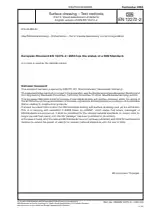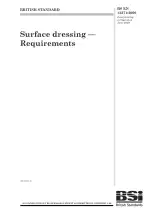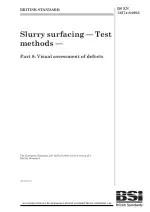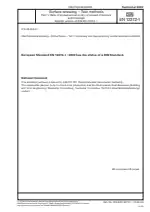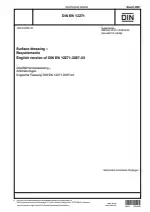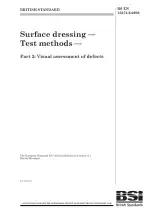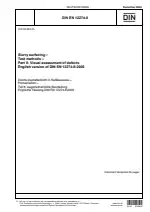Surface dressing - Test methods - Part 2: Visual assessment of defects
Also Known As:
The DIN EN 12272-2 standard provides guidelines for evaluating the defects in surface dressings used in various trafficked areas, such as roads and airfields. The standard covers both qualitative and quantitative methods of visual assessment to determine the presence and severity of defects.
The purpose of this standard is to assess the durability and performance of surface dressings by identifying any defects that may affect their adhesion or overall quality. One example of a defect that can be detected through visual assessment is fretting, which indicates poor adhesion of the binder to the chippings. By using the methods specified in this standard, potential issues with surface dressings can be identified and addressed, ensuring their longevity and effective performance.
| Descriptors | Adhesion, Assessment of defects, Binding agents, Circulation and space systems (buildings), Construction materials, Defects, Definitions, Distribution, Distribution of density, Dosage, Error analysis, Error consideration, Evaluations, Fracture, Impact testing, Lay, Measurement, Measuring techniques, Pavements (roads), Probable errors, Quality, Quantity, Road construction, Road superstructure, Roadstone aggregates, Structural failure, Surface treatment, Testing, Visual, Visual inspection (testing), Wetting |
| ICS Codes | 93.080.20 - Road construction materials |
| Language(s) | English |
| File Size | 993.3 KB |

